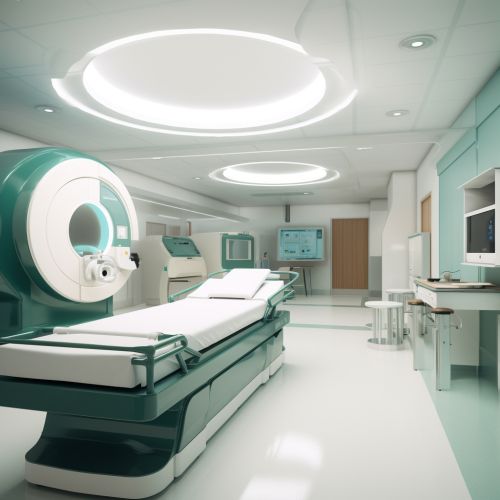Radiation therapy
Overview
Radiation therapy, also known as radiotherapy, is a type of cancer treatment that uses high doses of radiation to kill cancer cells and shrink tumors. At high doses, radiation therapy kills cancer cells or slows their growth by damaging their DNA. Cancer cells whose DNA is damaged beyond repair stop dividing or die. When the damaged cells die, they are broken down and removed by the body. Radiation therapy does not kill cancer cells right away. It takes days or weeks of treatment before DNA is damaged enough for cancer cells to die. Then, cancer cells keep dying for weeks or months after radiation therapy ends.
Types of Radiation Therapy
There are two main types of radiation therapy, external beam and internal. The type of radiation therapy prescribed by a radiation oncologist depends on many factors, including:
- The type of cancer
- The size of the cancer
- The cancer’s location in the body
- How close the cancer is to normal tissues that are sensitive to radiation
- How far into the body the radiation needs to travel
- The patient's general health and medical history
- Whether the patient will have other types of cancer treatment
- Other factors, such as the patient’s age and other medical conditions


External Beam Radiation Therapy
External beam radiation therapy comes from a machine that aims radiation at your cancer. The machine moves around your body, sending radiation to a part of your body from many directions. External beam radiation therapy does not make you radioactive.
Internal Radiation Therapy
Internal radiation therapy is a treatment in which a source of radiation is put inside your body. The radiation source can be solid or liquid. Internal radiation therapy with a solid source is called brachytherapy. In this type of treatment, seeds, ribbons, or capsules that contain a radiation source are placed in your body, in or near the tumor. Like external beam radiation therapy, brachytherapy does not make you radioactive.
Side Effects of Radiation Therapy
Radiation therapy can cause side effects, as it not only kills or slows the growth of cancer cells, it can also affect nearby healthy cells. The healthy cells can recover, however, so most side effects gradually go away after treatment ends. The side effects of radiation therapy depend on the area of the body that receives radiation. Common side effects of radiation therapy include:
- Skin problems. Some people who receive radiation therapy experience dryness, itching, blistering, or peeling.
- Fatigue. Fatigue is feeling exhausted and worn out. It is a very common side effect of radiation therapy.
- Long-term side effects. Most side effects go away after treatment. However, some side effects may continue or might not occur until months or years after treatment. These are called late effects. Late effects can include heart or lung problems if you receive radiation therapy to the chest.
Conclusion
Radiation therapy is a powerful tool in the fight against cancer. While it does have side effects, many of these are temporary and can be managed with the help of a healthcare team. The treatment has been refined over the years, and with the advent of new technologies, it is becoming even more precise and effective.
